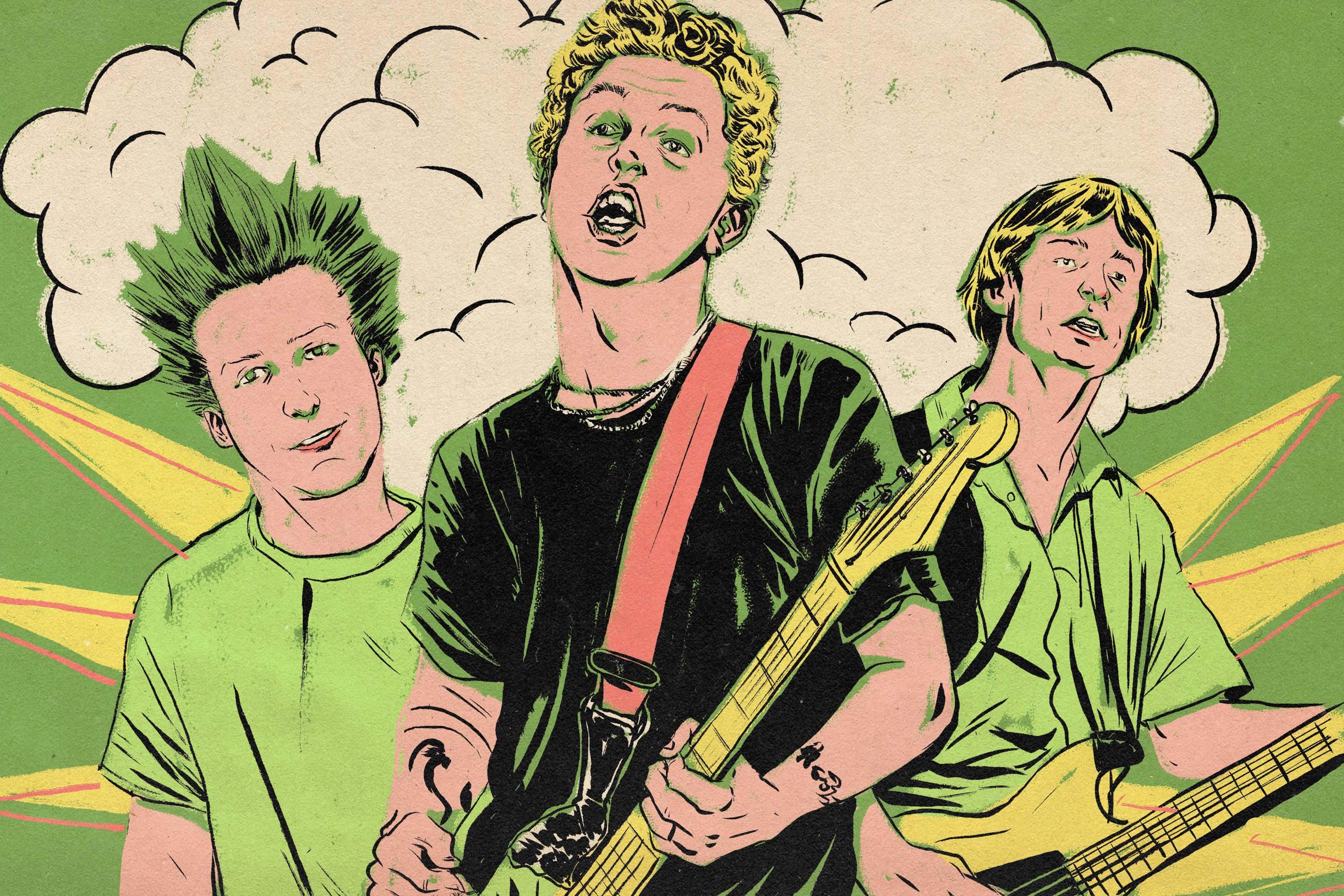 Music
MusicWelcome to Paradise: The Oral History of Green Day’s ‘Dookie’Thirty years after the release of the band’s pop-punk opus, Billie Joe Armstrong, Mike Dirnt, and many more look back on the making of—and fallout from—their explosively successful major-label debutHarrison Freeman
The bare butt was too much, even for Green Day.
It was the early 1990s, and big record companies were courting the band. Hard. So the three East Bay stoners started making demands—some more serious than others. They got one label to take them to Disneyland. Another flew them to New York. Then there was the unnamed A&R man they hooked with a gonzo request.
“We said, ‘We will sign with you if you tattoo Green Day on your ass,’” lead singer and guitarist Billie Joe Armstrong recalls. The next time the trio saw him, he had a surprise waiting. “He pulled his pants down and someone drew the Green Day logo on his ass,” Armstrong says. “We were like, ‘Oh my God.’”
It was, however, only done in permanent marker. That meant the contract wasn’t binding. Alas, Green Day signed elsewhere. But the story captures what the world soon learned about them: They’d never let their genuine ambition undermine their teenage souls. Released in early 1994, when they were barely old enough to drink, their major-label debut was a deeply angsty, goofy, polished masterpiece that exploded out of speakers like the atomic bomb on its cover art. And its name was a synonym for shit.
Dookie was the kind of album that teens loved: catchy as hell, funny, and sneakily profound. Armstrong was singing about some of the same things grunge bands were, but in a much different way. Instead of brooding about their alienation, sexual frustration, and boredom, Green Day raged gleefully. They did it, bassist Mike Dirnt says, by “taking these things that are really meaningful emotionally, and sometimes very dark, and then making them sound happy, like there’s a light at the end of the tunnel.”
The hit record didn’t just turn Green Day into rock stars. It snot-rocketed an entire genre of music into the mainstream. Pop-punk can be divided into two eras: before and after Dookie. The album has sold more than
15 million copies and influenced too many artists to count. “Dookie changed my life to the point that it’s almost redundant: It’s like the Beatles of our generation,” Fall Out Boy lead singer and guitarist Patrick Stump says. “I’m not even sure if I own a copy because I have every song imprinted on me in a way that transcends the need to even listen to it anymore.”
Three decades later, as they prepare for a world tour celebrating the 30th anniversary of their breakthrough album, Armstrong, Dirnt, and drummer Tré Cool are well into middle age. But as they look back at the making of Dookie, those days don’t feel so far away. After all, even in their early 50s, they haven’t outgrown the hair dye, dick jokes, and mudslinging that helped make them famous.
At least not totally. “We all have a little kid inside of us that doesn’t ever go away,” Dirnt says. “We’re perpetually teenagers. A certain part of your personality, if you’re lucky, never grows up.”
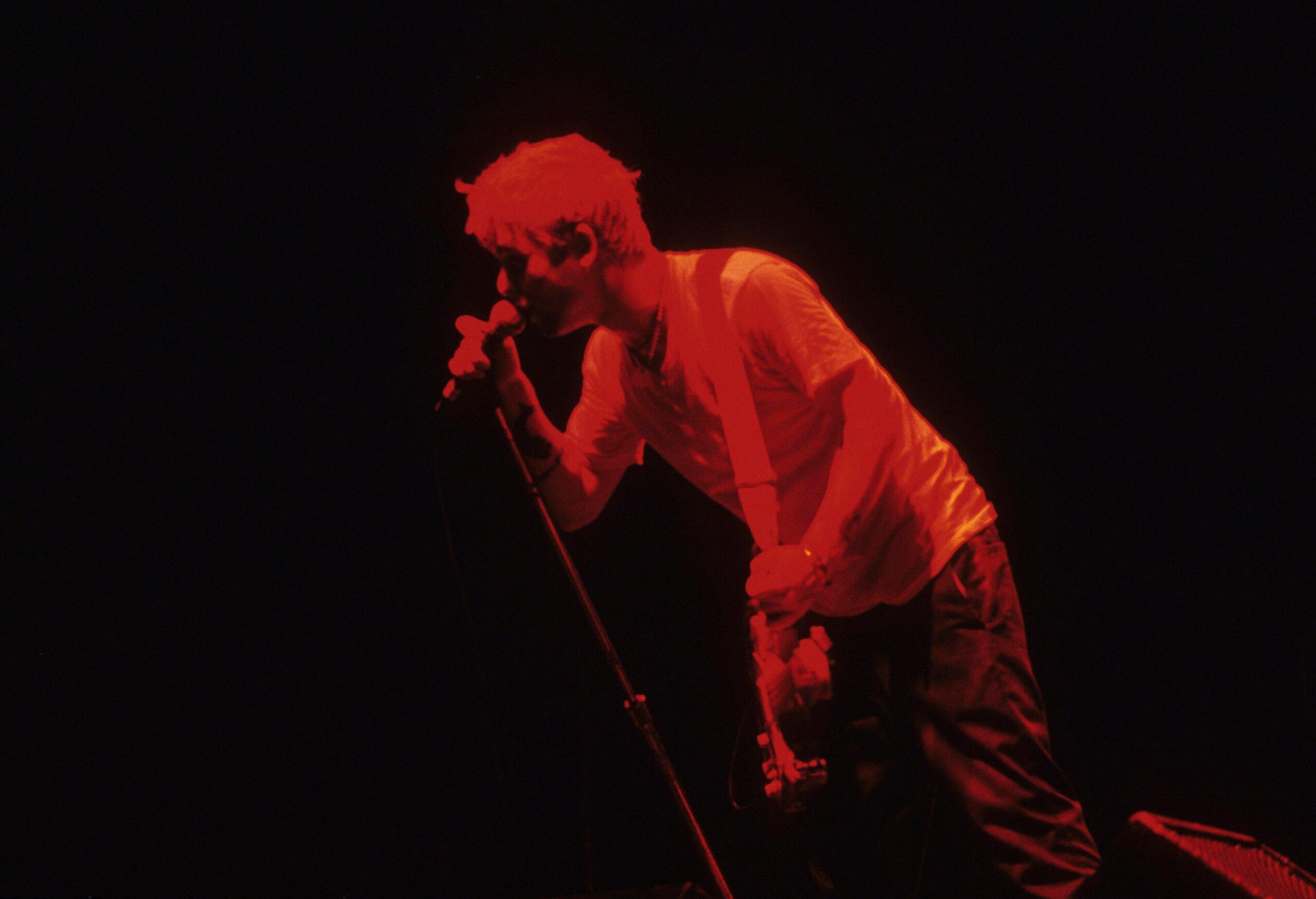
Green Day performs at CMJ Music Marathon on November 3, 1993.Photo by Steve Eichner/Getty Images
Part 1: “I Fucking Freaked the Fuck Out”
As fresh as Dookie seemed, it didn’t just drop out of nowhere. Green Day had already released two strong-selling indie albums on Lookout! Records, 39/Smooth in 1990 and Kerplunk in 1991. But eventually they started looking for a major label. The process was an emotional roller coaster. After all, the band’s home club,
Berkeley’s 924 Gilman Street, was militantly anti-capitalist. The determined group knew that going corporate would result in Gilman exiling them, but it was time to move on. To do that, they needed a producer they actually wanted to work with. It took awhile, but they found their man: Rob Cavallo at Reprise, a Warner Bros. Records imprint founded by Frank Sinatra in 1960.
Billie Joe Armstrong (lead vocals/lyrics/guitar, Green Day): Integrity played a very important role in making the record because being from the Gilman Street community, it was very much frowned upon to be on a major label, and we could never play there ever again at one point. We were really excited and petrified at the same time.
Rob Cavallo (producer, Dookie): In 1991, it was all hair bands that were out there. The big motorcycles, stripper girls, the Mötley Crüe–ish kind of thing. And then of course Seattle hit. But in little pockets of America, there were underground clubs. Like in Orange County, and maybe up in Boston and D.C., there was a punk movement. And there was this idea of a punk movement that was a little more melodic.
Geoffrey Weiss (vice president, product management, Warner Bros. Records): The Ramones didn’t have [Top 40] hits, and the Damned didn’t have hits, and the Clash only had hits when they slowed down and played songs that weren’t absolutely punk. [But] modern rock had opened up a lot with Nirvana.
Cavallo: Most of the other A&R people at the time, they were trying to help me. They were saying, “Are you sure you want to sign a punk band? Because we signed the Ramones and we signed the Sex Pistols. And the truth is, those things never sold that well.”
Armstrong: Rob produced the Muffs’ record, which was one of our favorite records at the time.
Weiss: The way I would describe the Muffs is they were a band that came out of punk, but that had a real love for early ’60s rock ’n’ roll, which is not something that was very common in punk in those days. And
Kim Shattuck, she was a phenomenally gifted songwriter, and her scream … you could say it was obnoxious, but I would say it’s one of the greatest screams in the history of recorded music.
Cavallo: The Muffs were on Warner Bros. two years before Green Day was.
Related
Su002du002dt Happens: Green Day’s Explosive ‘Dookie,’ 25 Years LaterRonnie Barnett (bass, the Muffs): We were signed in the post-Nirvana grunge craze, very early on. So I think what they saw in us was that you could be a band on a major label and have a record that is true to yourself. I hate the term “sellout,” but you didn’t have to sell out to have a good record on a major label. Because our first record, it has an Angry Samoans cover on it. It’s got all this weird stuff on it.
Cavallo: I was mixing the [Muffs] record, and it was late at night and [then–Green Day manager] Jeff Saltzman came in, and my eyeballs are falling out of my head. And he goes, “I got this new band, they’re from the Bay Area, they’re called Green Day, you’ve got to listen.” And I haven’t heard of them yet. And I’m thinking like, “Motherfucker, I’m sitting here working, I’ve been working 12 hours and getting this record right. I’m tired as fuck, you asked me to listen to something new right now?” I had the instinct to be like, “I’m going to throw this in the trash.” And instead there was a little voice in my head that said, “Yeah, don’t be an asshole. You never know, it’s your job. It’s the next big thing. Just listen to it.”
So I worked another hour and I got in the car. Now I’m really tired. It’s 1:30 in the morning, driving down the freeway, headed back to Woodland Hills from Burbank, and I fucking freaked the fuck out. I heard “She” and “Burnout” came on. And they were Billie’s four-track demos, and I just could barely speak. Then we went through the war of trying to sign them.
Armstrong: Rob was shy at first.
Cavallo: The first time I ever go see them, I fly up to Berkeley and I’m a little nervous. Because I liked them so much and I didn’t know what to expect. And I end up meeting them at the house on Ashby Avenue, which is a famous street that goes right through the heart of Berkeley. And they lived in the basement apartment. Which was absolutely dirty. The reason why I can say that is because what I saw almost exactly is what you see in the “Longview” video. The “Longview” video is shot in that apartment. They performed for me in that little room. I sat on an overturned paint bucket. And I saw exactly what you see.
Armstrong: The more that we talked, we saw him also as a musician.
Barnett: Rob was a music guy. Played guitar. And Rob always wanted to be a producer. Rob grew up in a Hollywood showbiz family.
His dad managed the Lovin’ Spoonful. Rob would get gifts as a child from Mama Cass. His dad managed Prince forever.
Mike Dirnt (bass, Green Day): When we met him, the conversation immediately went to music. That was the first thing that made him stand apart from all the other A&R guys. It wasn’t “How much we want to sign you,” “What we can do for you,” and this and that. It was about, like, “What kind of music are you into?”
Armstrong: We just started having these talks about sound, and talks about Generation X’s first record, and how we want to feel like that, and how great Nevermind sounded. We wanted it to sound big like that. But we played fast stuff, so it was a tight space sonically to get right. He was into sticking to the integrity of what we had already recorded with Kerplunk. I think a big mistake that a lot of bands make is trying to make a sound happen to try to be commercial. He understood that very much.
Dirnt: We just wanted to capture what we do and make it bigger. We’re like, “This guy can do that.” Again, it wasn’t like we were talking to an A&R guy so much. He was like a smart older brother that knew his way around big recording studios, but was also a great musician and cared about awesome rock ’n’ roll and music history.
Cavallo: I love the idea that they were kind of like the Beatles meets the Buzzcocks or the Ramones. They were such a tight band. The songs were so good, and Billie’s voice was so good. But the intangible for me was that they were so smart. They asked me questions like, “Well, what’s Warner Bros. going to do to help us?” And I was like, “We’re going to get the gatekeepers to open the gates for you. And also, I’m going to make it so no one fucks with your music.”
Dirnt: We started talking music. Next thing you know, Rob’s jamming through a bunch of Beatles tunes.
Cavallo: They go, “We hear you can play all the Beatles songs on the guitar, and you know all of it.” And I was like, “Pretty much. I think I do.” I have a weird memory. Any song I’ve ever played, I can remember it. It’s kind of a strange thing. So they got me really wasted on some pot and they handed me a guitar—and I was sitting on Tré’s bed—and then they were like, “Can you play ‘Help!’? Can you play ‘Yesterday’?”
Armstrong: I was really into listening to Revolver and Rubber Soul at that time, and Rob knew all of those songs on guitar like the back of his hand.
Cavallo: We got some pizza, and we went to this place called
Indian Rock. We smoked more weed and then I had to go to the airport. Their weed was so strong, I missed my plane. I was reading a book. I looked up and the airport was empty. I had to go get a hotel.
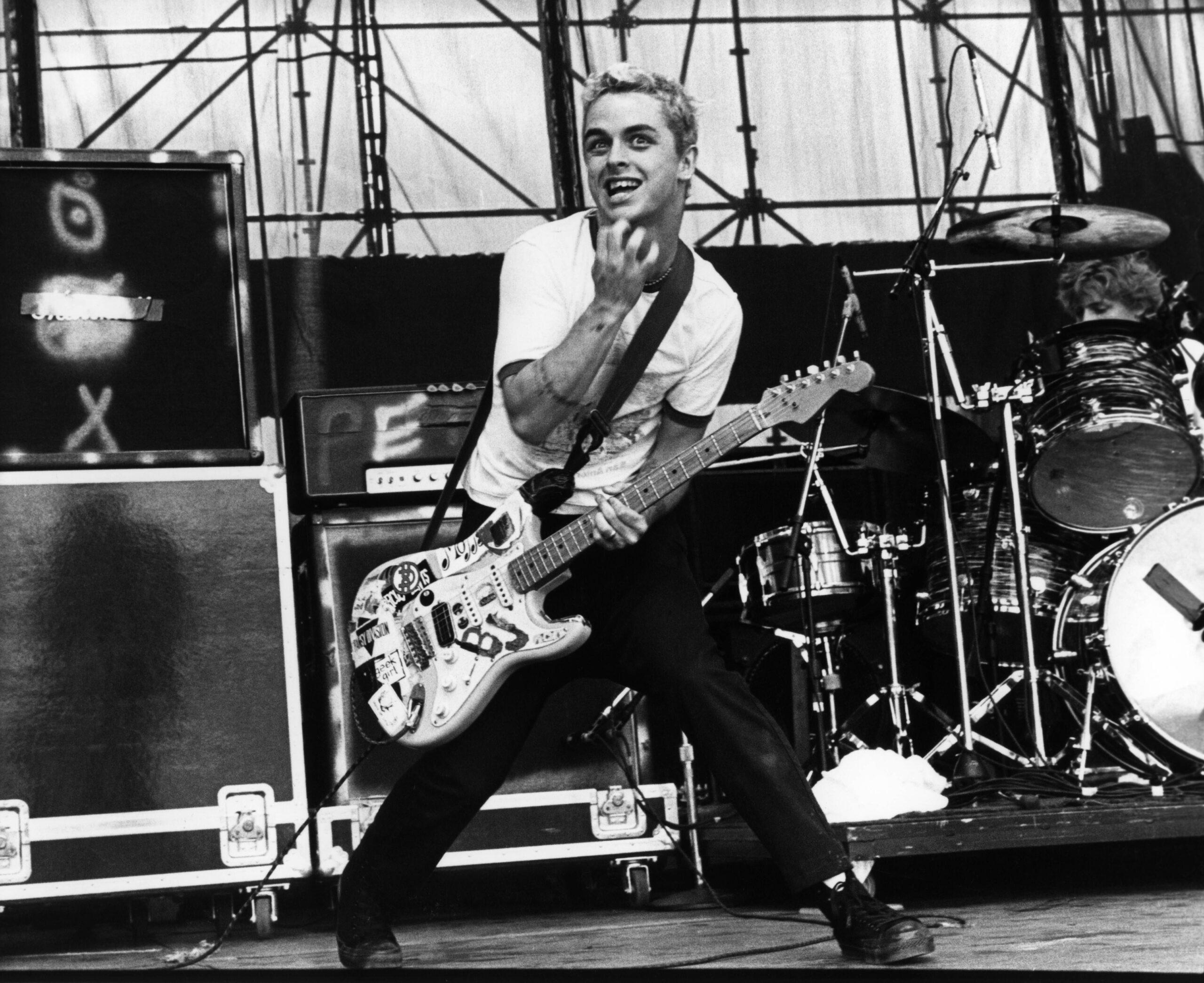
Green Day performs at the 1994 Lollapalooza.Photo by Ebet Roberts/Redferns
Part 2: “This Was Something More Than Just a Really Good Punk Rock Band”
Green Day recorded Dookie in 1993 at Berkeley’s Fantasy Studios, where Journey had tracked a pair of albums. Needless to say, it was the most professional setup the band had ever had. As weird as it felt for them to make a big-budget record, they were ready.
Armstrong: We were doing records that cost a thousand dollars, and then all of a sudden, we get this budget to have all of this time to make it right.
Cavallo: I was just producing my second record ever for a major. And had a budget of $100,000. And that’s it. Which, back then, that wasn’t that much money at all.
Armstrong: The lyrics were done. Everything was pretty much done, so we had it down. By the time we got into the studio, we knew what we were doing—except for the fact that we didn’t know how to record in this more technical way.
Dirnt: It’s work. That’s really the key.
Armstrong: We smoked a lot of weed, that’s for sure. I remember we were all into bicycles at the time, so we would roam around Berkeley on our bikes and go down to
Shattuck and in the main downtown area. It wasn’t too complicated. I remember when we went to Tré’s parents’ house up in Willits in Mendocino County. They had this huge property, so we would go and get lost in the woods up there together. There was a place that we could go swim, the Snake River. There was just little stuff like that that was important for us to get outside of our heads a little bit.
Cavallo: One of the great things about the record was how effortlessly thorough the performances were. I remember Tré just got in there and he just fucking rocked the shit, Mike rocked the shit. Billie’s playing glued it together in a way that was unbelievable. And then when he came in to sing, I think he sang the whole fucking record in two days. It was like, one or two takes per song. The guy was on fire.
Dirnt: You get the courage after you do the thing you’re afraid of. We rehearsed and demoed the shit out of the record, and then we were touring basically up until we came back to make the record. That’s how [a new recording of Kerplunk’s] “Welcome to Paradise” ended up on the record. Because it had gotten better on tour.
Cavallo: We bought them
a bookmobile. The idea that the bookmobile was something that they wanted was actually a positive. It is like, “Hey, buy this van that they could tour in,” for 15 or 20 grand or whatever it was. Because it’s like built-in promotion. These kids want to hit the road? We thought, “Well, that’s awesome.”
Weiss: The first time I saw them after we signed them was when they were opening for Bad Religion at the Palladium. And Bad Religion own L.A., they’re a big band here, they have been for a very long time. And big enough so that to me they were always kind of mainstream. They play the professional venues and they put out records on Atlantic. And Green Day blew them off the stage. Not that Bad Religion weren’t very good, but the kids were going insane for Green Day. And that was the first inkling I had that this was something more than just a really good punk rock band.
I would say that what Kurt Cobain and Billie Joe have in common is that their voices cut through everything. One of the gifts that you have to have to be a big rock star—or you had to have to be a big rock star—was covering up your intelligence a little bit. If you sounded too smart, that would put people off. It’s quite possible to listen to Nirvana or Green Day and say, “That guy is just like me.” It’s not possible to listen to Stephen Malkmus and say, “That guy’s just like me.”
Jason White (touring guitarist, Green Day): That’s him onstage. That’s when he’s at his most on. I mean, he has other things about him that you don’t see onstage, but I honestly think he’s kind of happiest when he is performing live. So that comes across. He cares. And he wants whoever’s there to be moved to have a good time, and to laugh, cry, do something. He’s there to provide it.
Armstrong’s songs were a sugar rush, but he always managed to sneak in some vegetables. There was “Welcome to Paradise,” an ironic ode to life in a rundown part of town; “Longview,” about what teenage life is like when you feel like you have no future; “Basket Case,” where Armstrong searches for answers about his severe anxiety; “Coming Clean,” the singer’s attempt to make sense of his sexuality; and “When I Come Around,” the closest thing Dookie has to a ballad. (One song that didn’t make the cut: “Good Riddance (Time of Your Life).” “I did a demo of it on a four-track,” Armstrong says. “At the time, it was just something that I was holding on to. I didn’t see it going on Dookie at all.”)
Armstrong: Living in Berkeley, going to Gilman, it was just at the moment in my life when I was 20 years old, questioning my sexuality and being bisexual and all that, I think it was important to sing about. It didn’t seem radical. I think just for me, it felt like writing a song like “Coming Clean” was a breakthrough.
Cavallo: You get a guy like Billie who can write his emotions into a song, and he can write his truth, and he can write about how he feels, and he can write about what he sees. There’s the story of “Welcome to Paradise,” where you’re living in a city with not much prospects, and you get out of high school and now what’s going to happen? There’s the paranoia, the self-loathing of “Basket Case.” Like, “Well, what the fuck am I? What am I going to do?”
Armstrong: The thing about East Bay punk rock music was that there was always moments where it had a groove to it. Operation Ivy or Crimpshrine would put in these moments where it would have a half-time feel to it. I think there was a lot of funk that was going on at the time. It was like there was a lot of Chili Peppers rip-offs that were in the Bay Area. I just think that there was something, a groove was just in the air, so that’s how [“When I Come Around”] came about.
Cavallo: We had faster tempos than grunge, and that was something new. And also, we had a sense of humor. I thought “Longview” showed that playful side. “Call me pathetic, call me what you will …”
Armstrong: We had been working on that song. I had just two chords and the beat. I think I just asked Mike if he can write a bass line to it.
Dirnt: Billie was doing this little slide shuffle on guitar, like a Pretenders thing, and it was great. I said, “Play that thing for me.” We were at home, and I was actually on acid. It just stuck in my head. I started playing. At the time I was playing a bunch of jazz. I wrote the first part of it. Then we got to band practice in Billie’s mom’s living room, and I remember thinking, “Shit, now I’ve got to write the rest of it.”
Cavallo: I would give Billie Joe credit for picking “Longview” as the first single. He just said, “I think it’s ‘Longview’ because I think it’s a good representation of the record.” If you were to look at Dookie, and you were able to see where this band was coming from, it was always a bunch of stories about what it feels like to graduate high school and then be like, “Now what do I do?” The poignancy of the impotency that that song represents. “Masturbation’s lost its fun … I’ve got no motivation.”
Armstrong: To this day, I think it’s one of the most unique rock songs ever. The drums the way they are, the bass line. I just feel like it’s one of those rock moments that you never quite heard before.
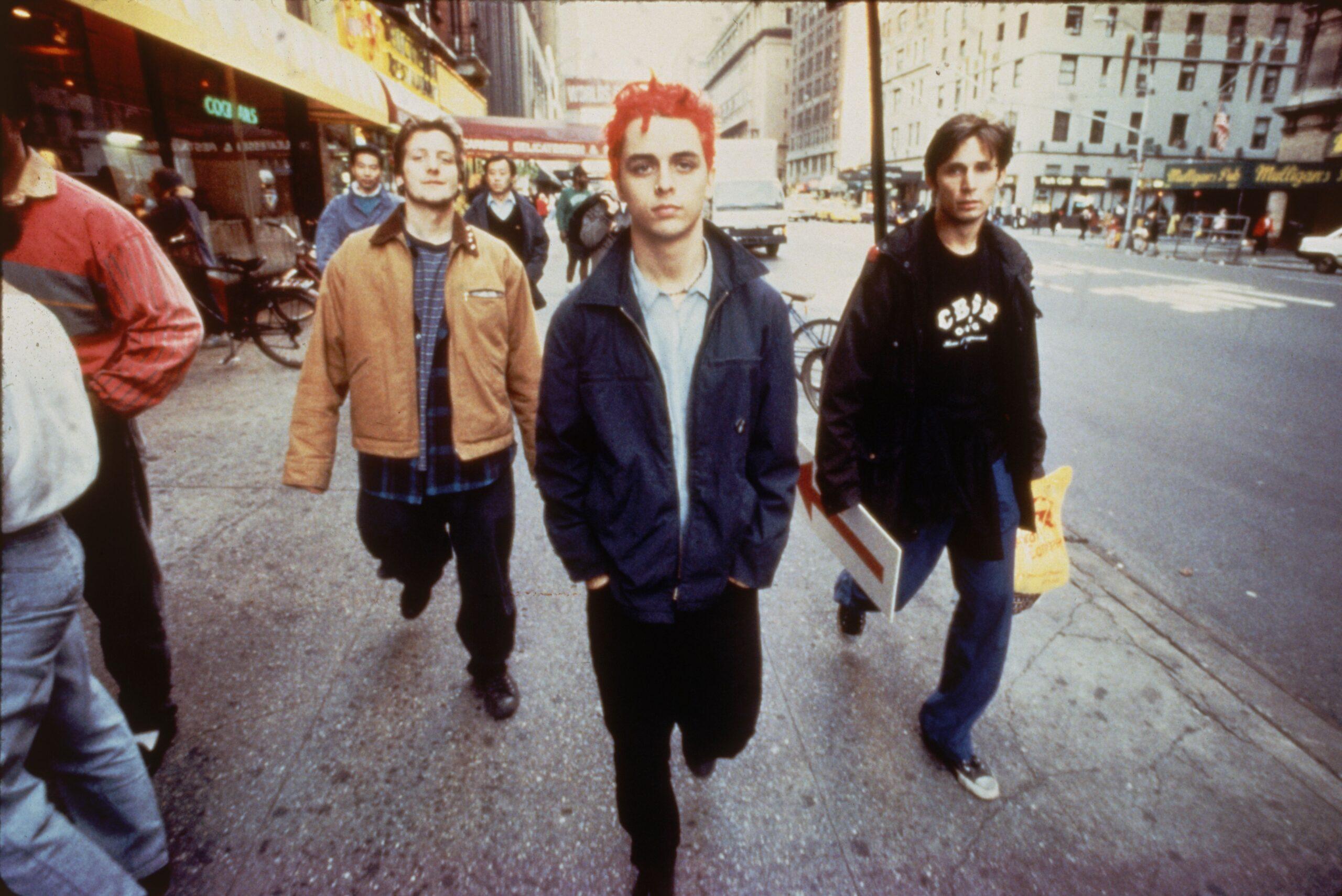
Mike Dirnt, Billie Joe Armstrong, and Tré Cool saunter through the streets of NYC.Photo by Ken Schles/Getty Images
Part 3: “Shit Happens”
On February 1, 1994, Dookie hit record stores. But the album was not an immediate smash. In fact, it didn’t crack
the Billboard 200 chart for almost another three weeks. Green Day’s style of punk, as poppy as it was, wasn’t widely popular at the time. The puzzlingly named album, which featured now-iconic cover art by East Bay cartoonist
Richie Bucher but not a photo of the band, took awhile to catch fire. Thankfully for the trio, it was the ’90s. There was still word of mouth, rock radio, and MTV.
Armstrong: Sonic Youth had a record called Goo. That’s what it reminded me of. Obviously it’s about shit. But also, I had locks back then and a lot of my friends did. We had locks and we would have nappy hair. We’d call them “dookies,” so it just felt right.
Cavallo: The record company was very cool. It was more of a question, and not a pushback. They were basically like, “What does ‘dookie’ mean?” And I said to the band, “The label’s asking, what does ‘dookie’ mean to you guys?” And they said, “Well, it is shit.” And very quickly after that, we had the record cover anyway. You can see the visual.
Armstrong: I was jumping up and down happy with it. I was so stoked. It was like we wanted to do something that had a Rocket to Russia feel. [Richie Bucher had] done a bunch of record covers through the years, and he’s so East Bay, too.
Cavallo: It’s the pain of life. Shit happens.
Weiss: There’s a lot of swearing in “Longview,” and commercial radio stations still don’t play records with swear words. So I was like, “We need a radio edit.” And I think everybody’s first impulse was “No.” And I was like, “Well, if you don’t do a radio edit, we’re not going to get on any commercial radio stations.” So I sat in a room with Mike [Dirnt] and an engineer for probably eight hours, reversing the words, trying different sound effects. And he was like, “That sucks, I hate it.” And Rob stuck his head in every once in a while and he said, “What about a zipper?” And I was like, “That’s weird.” So the engineer found a zipper sound effect. And the amazing thing about the zipper is it is kind of like the zipper is saying, “fuck,” but it’s not. It’s just a zipper.
I remember in the middle of that, I was frustrated because I was like, “You don’t have to listen to the commercial radio station. This is a tool. If it’s not perfect, it’s better to have something that’s good than something that’s nonexistent.” And I said to Mike, “How many records do you want to sell?” And he said to me, “I don’t know, half a million?” And I was like, “That’s a lot.”
Related
“Good Riddance (Time of Your Life)” and the Vindication of Green DayArmstrong: That was the first time we ever did press. We would go into radio stations and talk. There was no pie-eating contests or anything like that, but it was the first time that we were like, “Oh my gosh, we’re way busier than I thought we’d ever be.”
Weiss: “Longview” came out and got a good amount of airplay. We probably got 20 major market stations to play it, starting out. And maybe got up to 30. It was getting some reaction. It was not extraordinary. It was a minor hit. It was an alternative rock hit.
Cavallo: I would call KROQ from different phone numbers and change my voice and be like, “Hey, man, I really like this song. I think it’s called ‘Longview’ by Green … somebody. And I wonder if you can play that song.” They’d say, “What’s your name?” And I’d be like, “I’m Steve.”
Weiss: Most bands when they’re signing to a label don’t have the skill set that Green Day did because they put out records and they’d been on tour. They knew exactly who they were. A lot of times when you sign a young band, there’s no one that has a sense about videos.
Cavallo: So 1994, it was only [13] years into MTV. It was still massively huge. You had to make a video. We were glued to whatever MTV was doing. You can’t underestimate the power of it. It was the single most powerful thing in music, period. And that lasted, shit, for probably almost 20 years.
Armstrong: MTV was gigantic. It was the only place where you could see [artists’] faces and know what your tastes in music are. I watched
120 Minutes pretty religiously every Sunday night. All these new bands were on there. I think I discovered Hüsker Dü from it. [Host]
Lewis Largent really championed us in the very beginning. For us to be interviewed on there with Lewis for the first time, it was like, “Wow, we’re on 120 Minutes.”
Weiss: The [Warner] video department was phenomenal but they couldn’t read the band’s mind. So they sent out all the good young directors that we could afford for the first video. I think the budget for the first video was $50,000. David Lee Roth videos were $500,000. And Madonna’s were a million dollars, so we weren’t going to be competing with that. The band said, “We don’t like any of these videos. We don’t like these directors,” and I said, “Well, what videos do you like?” And they said, “We like Primus videos.” So we hired Mark Kohr.
Mark Kohr (Green Day video director): I went and met with them and they were young. I was like, “Oh boy, wow.” [“Longview”] was really great, and I asked them, “Hey, do you have any ideas for the videos? What you might want to see?” Because I would go and come up with an idea, and I always like to get some push from the band, some direction that I might not go in myself. And Billie said, “You know what we thought would be really funny? If you shot us sitting on the couch watching TV.”
And they laughed. And I was like, “That’s great. There it is.” Because as artists, we generally communicate with jokes. I took that and I worked with it. And then Billie and I would talk from time to time, he’d say stuff like, “Hey, thought it’d be really cool to have a monkey in it. Can we do that?”
White: They had to block off part of the street in front of their duplex. They had a couple of trucks for lighting and cameras. That night after they shot the video, we all went and rode bikes around Oakland, Berkeley, and we stole the “No parking” signs that had been there. And I still have [one], I think.
It was like, “Oh, they’re filming a video, this is crazy.” And I didn’t know what it was going to look like. And then when it did premiere, it was like, “Well, that’s what their house looks like.” That room was painted differently, but I’ve sat on that couch and watched TV. It was the representation of their life at that particular moment. But there’s a monkey.
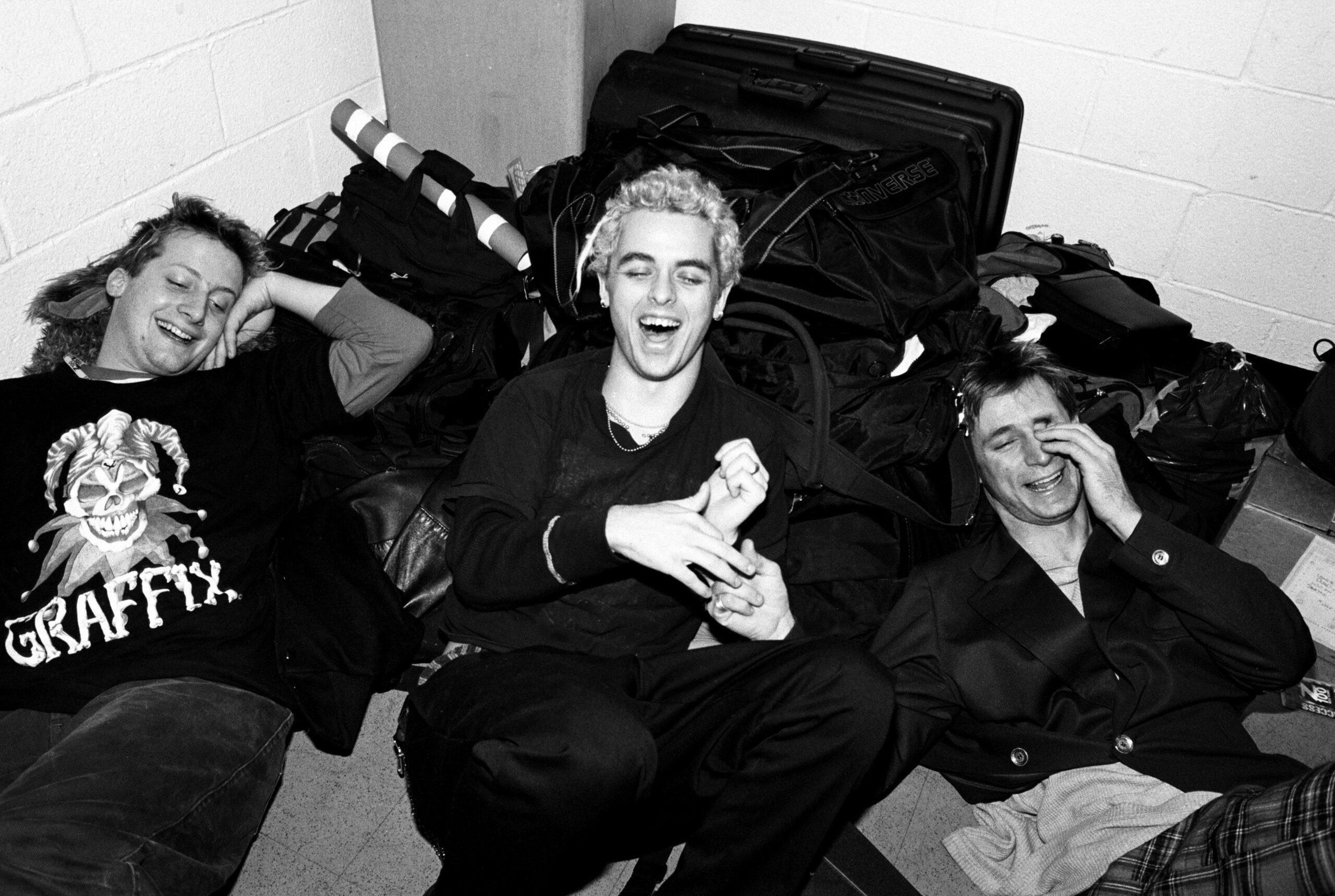
Tré Cool, Billie Joe Armstrong, and Mike Dirnt pose for a portrait backstage at Madison Square Garden in 1994.Photo by Catherine McGann/Getty Images
Part 4: “These Guys Are a Bunch of Kids Like Us”
“Longview” was an MTV staple by the spring of 1994, but the summer was when Dookie really exploded. In succession, Green Day joined Lollapalooza, released the psychiatric hospital–set “Basket Case” video, and played one of the most memorable sets of Woodstock ’94.
Dirnt: We were in Europe, and it was humbling because we had to struggle to get 1,000 people into us at the front of the stage. Nobody had heard of us, we’re speaking a different language. Then we came back and basically when we jumped on Lollapalooza, people were rushing the stage.
Weiss: A lot of times the bands that went on early in the day suffered a lot because the audience isn’t even there. Who wants to be at a show for 12 hours, especially in the summer hot sun? So they put Green Day on first. And there were these giant crowds lining up to get into Lollapalooza at 10 a.m.
Jon Ginoli (lead guitar/vocals, Pansy Division): Tré called me and he said, “Hey, do you guys have a van?” And I said, “Yep, we do.” And he’s like, “Oh, OK, cool. Well, thanks.” And I thought, “What just happened?” And then Lookout! contacted us and said, “They want you to open their summer tour, which was in July and part of August.” This is when Green Day drove around in a bookmobile. And so we’d hang out in the bookmobile sometimes, and someone had shown up with the rough cut of the “Basket Case” video.
Weiss: Part of why the video was incredible was the director had the idea to shoot it in black and white and colorize it.
Kohr: Anton Corbijn had done
a Nirvana video and it was so good. Oh my God, I wanted to do the colorizing like Anton Corbijn did. You used to flip through channels, right? I said, “Look, if people are flipping through the channels and they come across this, this is going to be so strong that they will stop.”
Cavallo: A lot of the grunge videos that were being played were done in very muted colors.
Kohr: I mean, it’s an homage to One Flew Over the Cuckoo’s Nest.
Pete Wentz (lyrics/bass, Fall Out Boy): The first time I saw the “Basket Case” video where Tré is rolled up to the drums in the wheelchair, my life changed. I couldn’t believe that you could make music 100 percent on your terms and still be on MTV.
Ginoli: “Basket Case” came out and bedlam just multiplied. So we were right there when it was exploding. And that was pretty interesting to watch because at that time, Green Day still liked to come out and talk to their fans, but I saw it go from “We’d like to do this” to “We can’t do this anymore.” Everyone knew what vehicle they were in, so it was a little difficult.
Cavallo: “Longview” was a long, slow build. The second single, “Basket Case,” fucking took off.
Armstrong: Then suddenly, it was like we had “Basket Case” and Woodstock that hit simultaneously. Then that’s when everything just exploded.
Dirnt: As we’re driving in, it just looked like a fucking miserable time. We just wanted to bring our own brand of fucking fun, chaos, and rock ’n’ roll and joy to this 350,000-person shit show. Because it was like, “Man, these people have been sitting in mud and rain for days.” They were fucking miserable. We got onstage and it was like, “Let’s just do what we do.”
Cavallo: I watched 100,000 to 200,000 extra people come over, and they crunched in. So it pushed the kids that were in the front up. It wasn’t dangerous, per se, but it was very muddy. And then the band started to play, and it was just absolute fucking pandemonium.
Dirnt: When you come from nothing, you’ve got nothing to lose. And so there’s a part of us that was taking the piss out of everything that we did back then. This is going to end tomorrow anyways, so let’s just fucking make it as fun and chaotic and crazy as possible.
Cavallo: Because it had rained a lot, and there was grass on the ground that turned into just giant mud clumps. And sometimes the kids would pick up a mud clump and throw it on the stage.
Armstrong: Mud started hitting my guitar, so I was like, “Oh, this isn’t going to work anymore,” and I didn’t have a backup guitar, so I just gave it to my guitar tech roadie.
Cavallo: I was both never more excited and also afraid in my life.
Armstrong: I just started throwing mud back at the audience.
Cavallo: And the band kept playing. They wouldn’t stop playing. All of a sudden it was just like the fuse hit the dynamite.
Armstrong: People started climbing onstage, and everybody was so covered in mud that you couldn’t tell who was in the band and who wasn’t in the band. It was so full of joy and [anger] at the same time because we were exactly the same age as our audience. That’s what split us different from everybody else [on the bill]. When Dookie came out, I was 21 years old. That was just one of those moments where I think people were like, “Hey, these guys are a bunch of kids like us.”
Cavallo: I was standing at the back of the stage. Thank God there was a lot of security. And I remember going, “Oh my God, a sea of humanity is coming at me. I’ve got to get out of here.” So I turned around and started running. And there was a van waiting for us to take us to an even more secure area. And when I got to the van, I looked behind me, and I could not fucking believe it, but the band was right behind me. And Mike got hurt because Mike got tackled.
Dirnt: I got fucked up pretty bad, broke a bunch of my teeth, fucking chipped up my elbow and stuff. But at the end of the day, I’ve been through much worse.
Armstrong: I look at it and I just laugh. It’s like, “Oh my God, we created this experience that is legendary.” That was never meant to happen that way. It was all spontaneous.
Cavallo: That is as pure a rock ’n’ roll moment as you could possibly get.
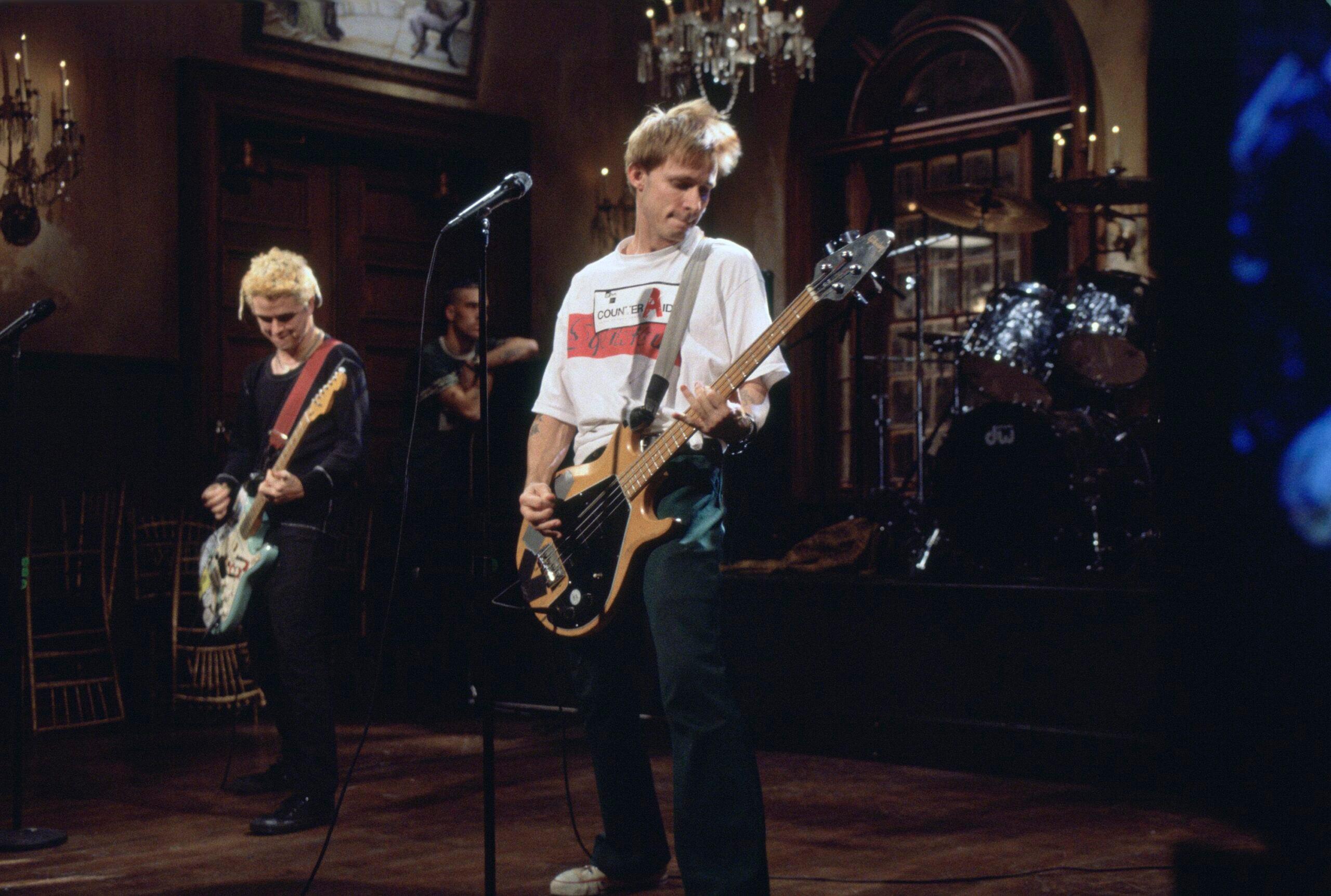
Green Day performs on ‘Saturday Night Live’ on December 3, 1994.Photo by Alan Singer/NBCU Photo Bank/NBCUniversal via Getty Images via Getty Images
Part 5: “We Just Changed the Fucking World”
Even after Woodstock, the wave of pandemonium didn’t break. By August,
Dookie had gone platinum—in just six months, doubling the half million that Dirnt had hoped to sell. That fall, Green Day headlined arenas and played
Saturday Night Live. And by early the following year, their next single, “When I Come Around,” was well on its way to becoming a top 10 hit. The road to superstardom was paved with surreal moments, including one fateful night in Boston. On September 9, 1994, the band played a free show sponsored by indie rock station WFNX at the Hatch Shell, the site of the city’s annual
Fourth of July celebration. The evening
didn’t go as planned.
Armstrong: It was the first [rock] concert that they had at the Hatch Shell in quite a long time, is what we were told.
Weiss: I’d gone to Boston to see the Green Day show, and on my travel authorization form it said, “purpose of trip.” And I wrote—this was obviously before the show—“Green Day riot.” But I did not really think it was going to be like that.
Armstrong: It just turned into chaos.
Weiss: He had a gift for the right kind of chaos.
Dirnt: They expected 5,000 people to show up. It was somewhere close to 60,000 or 70,000.
Armstrong: Part of the security was
guys out from prison.
Dirnt: Inmates doing security with bike racks instead of an actual barricade.
Weiss: Well, the Hatch Shell at that point had these little flower troughs in front of the stage. Billie Joe, shortly after the show began, he went and started digging up the flowers.
Armstrong: I think they had a giant blow-up fox that was out, and someone popped the balloon. People started coming over the walls.
Weiss: And at this point, I walk out onstage and I’m filming Tré because he looks amazing. And I’m just looking at Tré. And Tré stops playing, stands up, throws his sticks over the back of his shoulders and runs. And I turn around and I see the barricades coming down, and the cops coming onstage.
Armstrong: We didn’t play any more than 15 or 20 minutes.
Weiss: We were locked in the basement of the Hatch Shell for quite a while, like hours, while they dispersed the crowd.
Dirnt: We’re waiting it out downstairs. We get back to the hotel and I call home. Everyone’s reaching out going, “What the fuck did you do?” Because it went all the way across the country.
Related
Remix Your Canon: How Old Music Became the Biggest Thing in New MusicArmstrong: I was with [my wife] Adrienne and we turned on the news and then suddenly, it was this band. I was like, “Holy shit.” That was the holy shit moment for me, probably the biggest one. I was like, “Fucking A, we just changed the fucking world.”
Cavallo: The story of this Beatlemania-like thing happening at the Boston show became a super positive thing to resonate inside the halls of the headquarters of Warner Bros. Like, “Whoa, what do we have here? This is unbelievable.” You can’t even place a value on that kind of stuff. I was sitting there going like, “Jesus Christ, I’m the luckiest guy on the planet.”
Weiss: That was an outlier. But they’d always find a way to make every show something crazy.
Ginoli: I remember when we did the first arena date on Halloween in San Diego, I talked to Tré and I said, “Are you nervous?” And he said, “Fuck yeah.” But that didn’t stop ’em from going out and doing it. They were climbing the ladder. But it wasn’t like, “Of course I’m not nervous.” They weren’t fronting like that.
White: I was friends with them, so I got to kind of stand on the side of the stage or whatever while they were playing. And I remember just seeing Billie and Mike, they were possessed or something. They were just all on 10 the entire time. But then I looked and I watched Tré play and I was like, “Oh my God, I never realized what a fucking monster he is on the drums.” Maybe it was just seeing him in a huge place, but I just noticed this huge leap that he had made.
Ginoli: We were playing in Fairfax, Virginia, at George Mason University. The promoter comes up and wants to talk to me about what we’re going to sing about at our show. I said, “Well, that’s funny you should ask …” because Virginia back then had
all these homophobic laws. Sodomy laws. Yet Virginia’s state motto was “Virginia Is for Lovers.” I thought, “Well, no, it isn’t.” And that is propaganda that is aimed at kids, and we want to counter that propaganda by speaking the truth about who we are.
And if we use some swear words, that’s great. I think kids hearing swear words is a lot better than the barrage of violence they get just watching TV growing up. So we’re singing songs about loving a man or fucking a man. Great. No one’s getting blown up, no one’s getting killed. And this guy was saying, “Oh, the calls I’m going to get tomorrow morning.” I’m like, “Well, you’ll deal with ’em, won’t you?” But the thing is, that promoter tried to yank us. And Green Day said, “If you pull Pansy Division, we won’t play the show. We’ll find another city.” Green Day stood up for us.
Armstrong: We did SNL in December of that year.
Ginoli: We’re backstage and they’re like, “We need to wear a Pansy Division shirt.” And the only thing we had was [bassist] Chris [Freeman] was wearing one. He gave Mike the shirt off his back and he wore it on Saturday Night Live. That got us a lot of attention.
Kohr: I met with Billie [late that year] and he was sitting on the sofa he was sitting on in the video. He said, “Oh my God, it is crazy. It’s like every time I turn on fricking MTV, there’s my face.”
Armstrong: When it started blasting into heavy rotation, you’re on the biggest music station in the world and your face is plastered on there once an hour. You were surrounded.
Kohr: He was still reconciling that because they had gone through Gilman. And at that time, there was still that stigma of being a sellout.
Armstrong: It was pretty intense. It was a lot of mixed emotions.
Dirnt: I think we’re very impatient and critical of ourselves. That’s part of our staying power.
Armstrong: We were pretty tired at that point. It felt like a long time, but really, it was a period of about from February through December. Then in [1995] we just went in and started rehearsing again. We got a space in Oakland to go every day.
We were like, “Let’s just do what we did last time and get everything really tight, have everything ready to go.” I think it was scary at first because it definitely felt like a sophomore slump, even though it was our fourth album. I think it was a little bit like, “Oh boy, is this going to be a one-and-done thing?”
The release of Insomniac in October 1995 answered Armstrong’s question with a hard “No.” But even as Green Day moved on from Dookie, the fallout from the album never fully dissipated. It kicked off a pop-punk and emo boom that lasted decades. These days, the band clearly appreciates the love for the record. They’ll be playing it front to back—along with American Idiot, which turns 20 this year—on their
world tour starting this summer.
Stump: I was in fifth grade, and during a group project this other kid asked me to sneak under a table with him. He’d smuggled a Walkman into class and he put the headphones on me and he pressed play. I watched the cassette turn. Right out of the gate you get that tight snare roll of “Burnout.” There was something magical about it. This wasn’t just my first Green Day record. This was my first punk record.
Wentz: Truly, this was the first album that cut open my brain and made me think about what was possible.
Dirnt: You could really hear all three of our personalities in our playing. I think that just gave it a little bit more to bite into, and still does.
Armstrong: I don’t think pop-punk was really a thing while Dookie was around, but then it became a thing after that.
Cavallo: The genre has to grow and it has to keep going, and you want people to be influenced by you. I loved hearing Blink-182. I loved hearing Sum 41. I loved hearing all these other bands that were coming in because it very much validated that Green Day had kind of pioneered a genre.
Dirnt: We just wanted it to do good. We didn’t think it would turn into what it did.
Armstrong: To this day, I see people wearing [the Dookie] shirt and it just blows my mind. I always have this reaction. I’ve said this before about people wearing Green Day shirts: I see them, I’m like, “I wonder what kind of issues these people have?”
Cavallo: At Lisa Marie Presley’s house, I met Johnny Ramone, and he was just like, “I can’t believe what you guys did.” I said, “Dude, I can’t believe what you did.” And he is like, “I’m talking about your sales. We never made that money like that. How much did you sell on Dookie?” And sheepishly I said, “16 million.” He’s like, “16 fucking million. Are you kidding me?” And I was like, “Yeah, but you paved the way.”
White: It’s just in the consciousness now, right? When “Basket Case” or “When I Come Around” comes on, you’re like, “I know this song.” I mean, you can’t escape it. It’s everywhere and has been for three decades now.
Wentz: If you put this album on at a party, everyone knows and will sing along to multiple songs.
Stump: I’ll be in a nursing home someday not remembering my own name and someone will go, “Do you have the time?” And I’ll say, “To listen to me whine.”
Cavallo: If you’re anywhere between the age of 10 and 25, this music helps you understand yourself. I think the music is unchained aggression, melted with a sympathetic understanding of what you might be going through.
Dirnt: You remember a first kiss or a first fight or a first being disappointed by somebody you love or the world. Your body ages, but those feelings, they’re real. They’re deep.
Armstrong: It generates new fans all the time just because I think it’s so pure at heart. It’s what it’s like to feel like a young person. There’s no self-parody at all. It’s just the truth. It’s moments where you’re talking about jerking off to having a new girlfriend. Thirty years on, it’s just been a trip.End of article
These interviews have been condensed and edited for clarity.
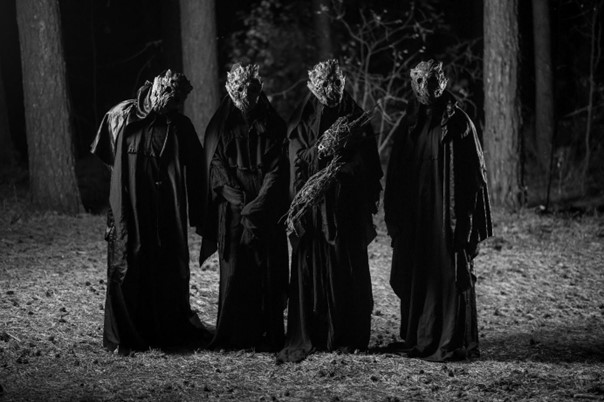



 Green Day performs at CMJ Music Marathon on November 3, 1993.Photo by Steve Eichner/Getty Images
Green Day performs at CMJ Music Marathon on November 3, 1993.Photo by Steve Eichner/Getty Images Green Day performs at the 1994 Lollapalooza.Photo by Ebet Roberts/Redferns
Green Day performs at the 1994 Lollapalooza.Photo by Ebet Roberts/Redferns Mike Dirnt, Billie Joe Armstrong, and Tré Cool saunter through the streets of NYC.Photo by Ken Schles/Getty Images
Mike Dirnt, Billie Joe Armstrong, and Tré Cool saunter through the streets of NYC.Photo by Ken Schles/Getty Images Tré Cool, Billie Joe Armstrong, and Mike Dirnt pose for a portrait backstage at Madison Square Garden in 1994.Photo by Catherine McGann/Getty Images
Tré Cool, Billie Joe Armstrong, and Mike Dirnt pose for a portrait backstage at Madison Square Garden in 1994.Photo by Catherine McGann/Getty Images Green Day performs on ‘Saturday Night Live’ on December 3, 1994.Photo by Alan Singer/NBCU Photo Bank/NBCUniversal via Getty Images via Getty Images
Green Day performs on ‘Saturday Night Live’ on December 3, 1994.Photo by Alan Singer/NBCU Photo Bank/NBCUniversal via Getty Images via Getty Images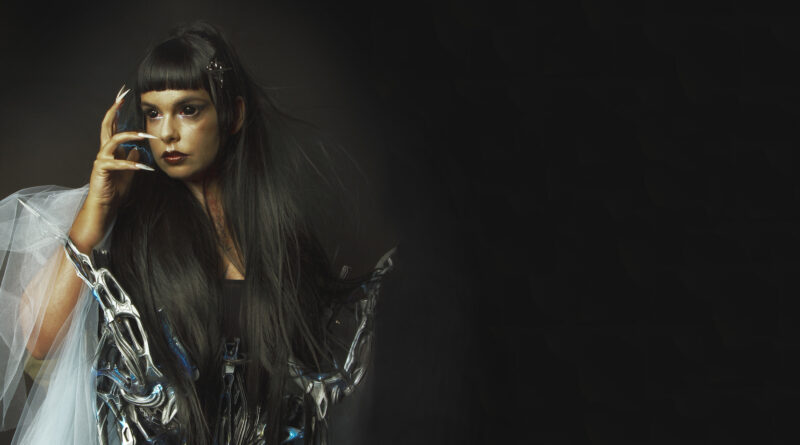



 Demo “Luna De Nocturnus”
Demo “Luna De Nocturnus” Demo “Grymyrk”
Demo “Grymyrk” álbum “De Mysteriis”
álbum “De Mysteriis” Metalion, Varg, Euronymous e Snorre
Metalion, Varg, Euronymous e Snorre Snorre
Snorre




